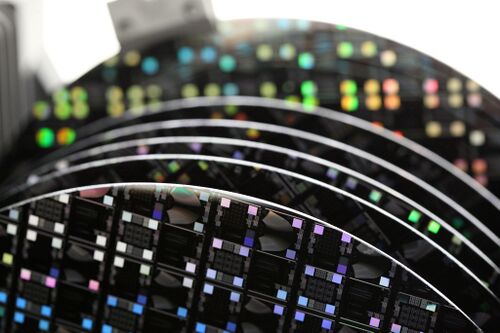Specific Process Knowledge/Lithography: Difference between revisions
| Line 292: | Line 292: | ||
| style="width: 20%"; valign="top"| | | style="width: 20%"; valign="top"| | ||
<!-- Removed by TARAN 2024-09-27 | |||
'''<big>Lithography TPT lecture slides</big>'''<br> | '''<big>Lithography TPT lecture slides</big>'''<br> | ||
''' NB: Access to slides require login''' | ''' NB: Access to slides require login''' | ||
| Line 300: | Line 301: | ||
*[https://labmanager.dtu.dk/view_binary.php?class=MiscDocument&id=4&name=Litho_Tool_Package_-_Post_processing.pdf TPT slides: Post-processing] | *[https://labmanager.dtu.dk/view_binary.php?class=MiscDocument&id=4&name=Litho_Tool_Package_-_Post_processing.pdf TPT slides: Post-processing] | ||
*[https://labmanager.dtu.dk/view_binary.php?class=MiscDocument&id=4&name=Litho_Tool_Package_-_Process_effects_and_examples.pdf TPT slides: Process Effects and Examples] | *[https://labmanager.dtu.dk/view_binary.php?class=MiscDocument&id=4&name=Litho_Tool_Package_-_Process_effects_and_examples.pdf TPT slides: Process Effects and Examples] | ||
--> | |||
'''<big>Training videos</big>''' | '''<big>Training videos</big>''' | ||
| Line 314: | Line 315: | ||
*[https://www.youtube.com/watch?v=btinNzYnLnY Training Video: Manual Puddle Developer] | *[https://www.youtube.com/watch?v=btinNzYnLnY Training Video: Manual Puddle Developer] | ||
'''Playlists on YouTube:''' | '''Playlists on YouTube:''' | ||
*[https://www.youtube.com/watch?v=3JhM3rmLVpA&list=PLjWVU97LayHAiCabstMfAUeeWyQoQI_cV Maskless aligner training videos] | *[https://www.youtube.com/watch?v=3JhM3rmLVpA&list=PLjWVU97LayHAiCabstMfAUeeWyQoQI_cV Maskless aligner training videos] | ||
*[https://www.youtube.com/watch?v=3JhM3rmLVpA&list=PLjWVU97LayHCX4sz2AH_YiPbNRmkrBYe5 Old Lithography TPT training videos] | |||
| style="width: 20%"; valign="top"| | | style="width: 20%"; valign="top"| | ||
| Line 329: | Line 331: | ||
'''<big>Process Flows</big>''' | '''<big>Process Flows</big>''' | ||
*[[Specific_Process_Knowledge/Lithography/Resist#UV_resist_comparison_table|UV resist process flows]] | *[[Specific_Process_Knowledge/Lithography/Resist#UV_resist_comparison_table|UV resist process flows]] | ||
*[[Specific_Process_Knowledge/Lithography/EBeamLithography#E-beam_resists_and_Process_flow|E-beam resist process flows]] | *[[Specific_Process_Knowledge/Lithography/EBeamLithography#E-beam_resists_and_Process_flow|E-beam resist process flows]] | ||
*[[:Media:Process_Flow_TPT first print.pdf|Old TPT process flow (first print)]] | |||
*[[:Media:Process_Flow_TPT alignment.pdf|Old TPT process flow (alignment)]] | |||
|} | |} | ||
<br clear="all" /> | <br clear="all" /> | ||
Revision as of 12:02, 27 September 2024
The content on this page, including all images and pictures, was created by DTU Nanolab staff, unless otherwise stated.
Feedback to this page: click here

There are four different types of lithography available at DTU Nanolab:
Comparing lithography methods at DTU Nanolab
| UV Lithography | DUV Stepper Lithography | E-beam Lithography | Nano Imprint Lithography | |
|---|---|---|---|---|
| Generel description | Pattern transfer via ultraviolet (UV) light | Pattern transfer via deep ultraviolet (DUV) light | Patterning by electron beam | Pattern transfer via hot embossing (HE) |
| Pattern size range |
~0.6 µm and up |
~200 nm and up |
~12 nm - 1 µm |
~20 nm and up |
| Resist type |
UV sensitive:
|
DUV sensitive
|
E-beam sensitive
|
Imprint polymers:
|
| Resist thickness range |
~0.5 µm to 200 µm |
~50 nm to 2 µm |
~30 nm to 1 µm |
~ 100 nm to 2 µm |
| Typical exposure time |
10 s - 3 min pr. wafer using mask aligners |
Process dependent:
Throughput is up to 60 wafers/hour |
Process dependent:
time [s] = Q*a/I |
Process dependent, including heating/cooling rates |
| Substrate size |
|
|
We have cassettes fitting:
Only one cassette can be loaded at a time |
|
| Allowed materials |
Any standard cleanroom material |
Any standard cleanroom material |
Any standard cleanroom material, except:
|
Any standard cleanroom material |
Equipment Pages
|
|
||
Lithography Tool Package Training
DTU Nanolab offers a Tool Package Training in Lithography; the course includes theory on lithographic processes and equipment. After the TPT has been successfully completed, you can begin training on the lithography equipment at DTU Nanolab.
You are required to pass this course, in order to get access to using the lithography equipment inside the DTU Nanolab fabrication facility (The Cleanroom).
For details, dates, and course material, please check the course description under Courses.
Signing up for the course
The course is in DTU Learn. You sign up for the course by enrolling yourself in the course DTU Nanolab TPT: Lithography - requires login
- Watch the lecture videos
- Successfully complete all the quizzes
Learning objectives
Learn about the fundamentals of lithography processing in a cleanroom fabrication lab:
- Coating
- Exposure
- Development
- Resist, substrates and pre-treatment
- Post-lithography steps
After completing the TPT
When all TPT quizzes have been completed successfully, you have finished the lithography TPT, and can begin the online training on the lithography equipment you need to use. The online training is available in the course DTU Nanolab: lithography equipment training - requires login
After completing the online equipment training, you become eligible for the hands-on authorization training, which will take place inside the cleanroom.
Knowledge and Information about Lithography
